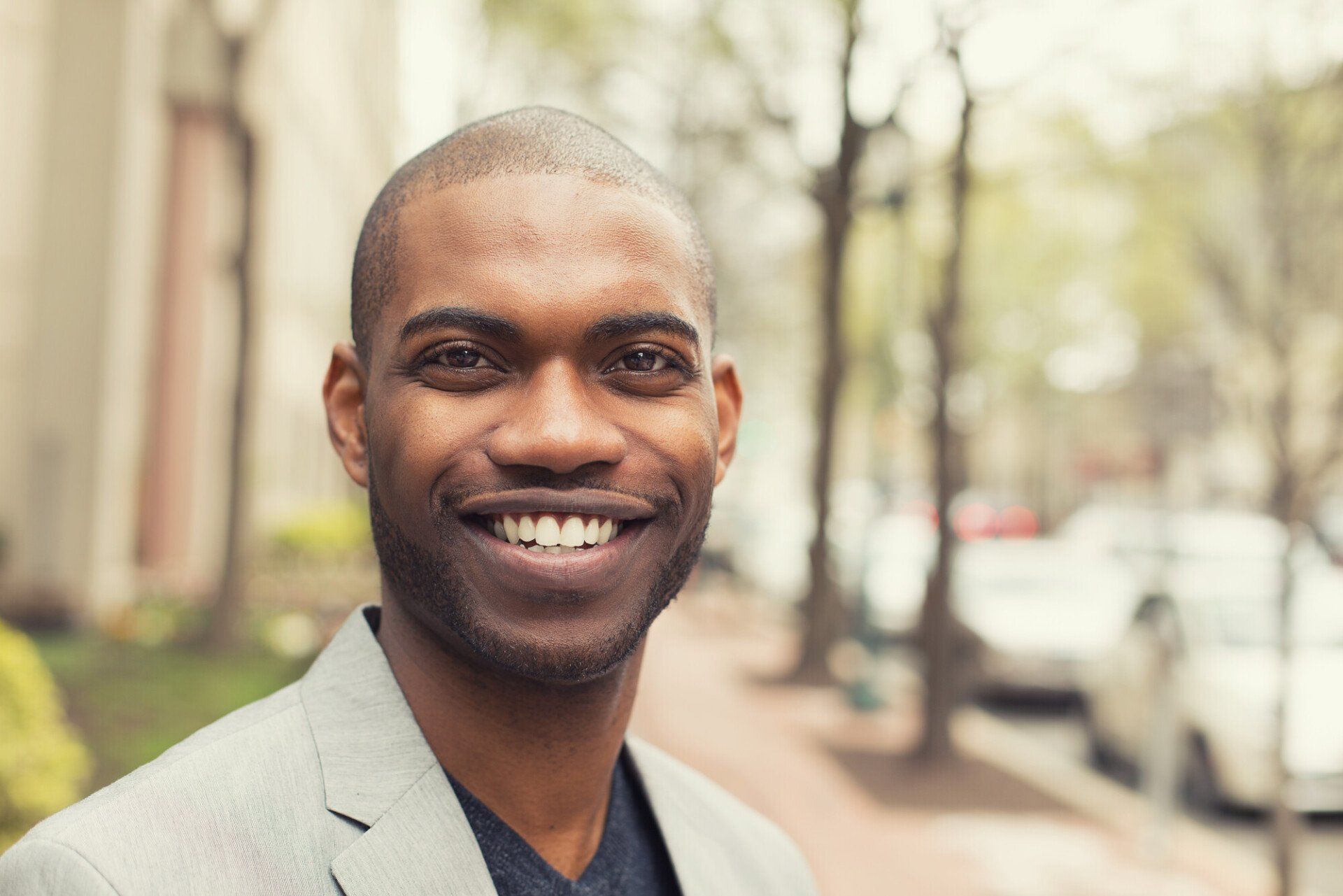Jeremy McQueen - Artistic Director | Choreographer
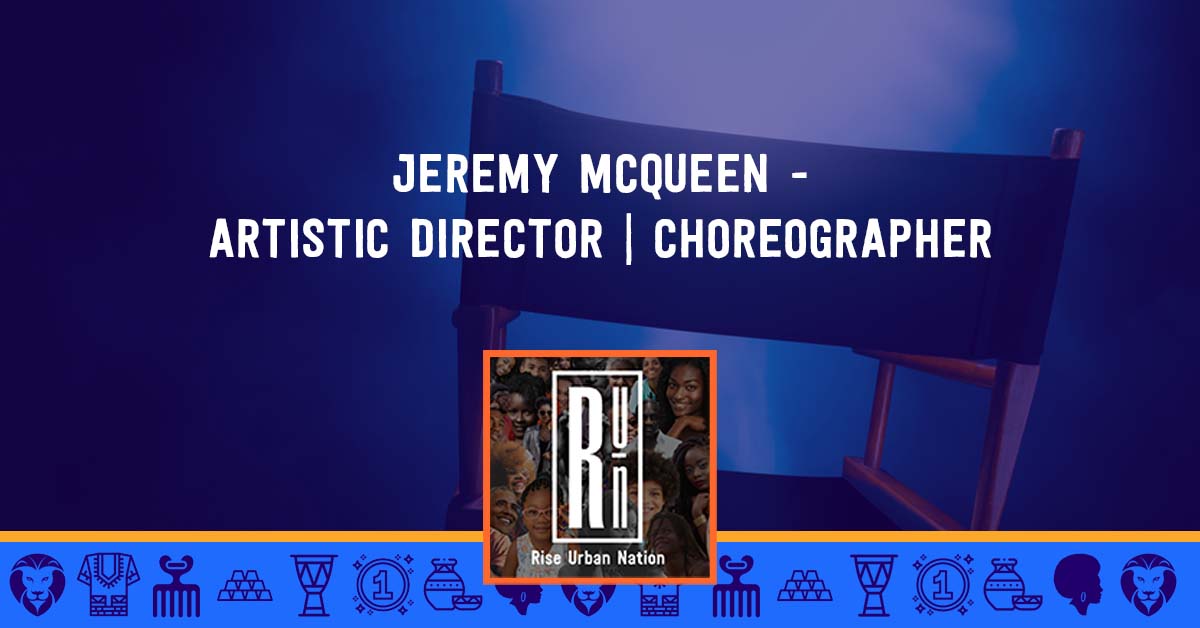
You don’t have to be perfect to reach your goals and pursue a passion. You just have to expose yourself out there and keep going. As an artist, Jeremy McQueen believes that by embracing who you really are, you are more authentic and your work becomes more meaningful. Jeremy is an award-winning choreographer, dedicated to story-telling rooted in experience and social engagement. His work aims to create spaces of comfort, solace, and connection through reflection—a sharing of observations of what is going on around him. At the age of eight McQueen saw a production of The Phantom of the Opera and was immediately drawn to the arts. Tune into this episode as he shares how you could take a leap of faith in pursuing what you really want in your life.
Connect with our Jeremy:
Watch “WILD: Act 1”: www.blackirisproject.org/wild
Website: www.blackirisproject.org
Instagram: @blackirisproject
Facebook: Facebook.com/blackirisproject
Twitter: @blkirisproject
We are currently surveying our listeners (or viewers) to learn more about you. Please take a few minutes and visit our website and click on the 'Listener Survey' link found on the home page. Thank you.
---
Listen to the podcast here:
Jeremy McQueen - Artistic Director | ChoreographerJeremy McQueen - Artistic Director | Choreographer
This next guest was connected to me by the wonderful Xtina. A big shout out to Xtina. She is always sending me great guests. Jeremy McQueen is from San Diego all the way to New York now. He is doing big things out in New York. I can’t wait for his plays to start hitting Broadway, but this was a delight right here. This is when art and entrepreneurship warm my heart and see him doing great things, doing the things that he loves, loving what he does, and hopefully, in the company of the people that he loves. Without further ado, let’s get into this episode as we learn about Mr. Jeremy McQueen.
---
We are getting to know each other. How did we get connected?
I call her Xtina because that is her name out on the streets. How did you meet Xtina?
We grew up together. We started going to school together in the second grade at Oak Park Elementary School in Oak Park. She lived right down the street from me for years and then we went to middle school and high school together.
You used to be out here in San Diego, right?
Yeah, I did. I moved to New York for college when I graduated from high school.
It sounds like you are never coming back with the life you live in.
There are a number of different opportunities that exist out here versus out in California. California is focused more on television and film, but for me, it was always my dream to be on Broadway and to be able to tour the world and Broadway shows. In order to do that, Broadway is in New York so you got to live here.
You got to live there. I haven’t watched a full film yet but I was reading The New York Times article. I hope that you get to record something in the juvenile or in the jail because that would be an amazing piece if you are able to do that. I was thinking about the choreography and the sonography that you could do in jail. I once saw a video. It was in the Philippines where they had all the people from jail doing this dance routine. I was like, “If he brings his love of the arts, ballet and beauty to jail and they do that, it is going to be life-changing for everybody.”
Unfortunately, the pandemic has presented a number of challenges to be able to do anything like that but I think this is a long-term project for me. Even though now I am focused on these first four iterations, I’m open to ways that this can expand, not only in New York but across the country.
Talk to us about the film. I read it but for those people who didn’t read it, how did this brainchild come together?
It was a series of a number of events that transpired independently of each other over the course of about a year. One of the initial moments was the Nashville Ballet. It had commissioned me to develop a new work for them. They had paired me with a composer that I didn’t know. I had not met him before but they were like, “I think you two would work well together.”
His name is Morgan. He is a singer-songwriter from Nashville that lives in LA. They gave us free reins to think about the type of ballet we would want to create for their institution. They gave us no limitations. Morgan and I put our heads together and he said, “What is a story that you have always wanted to tell through dance?” I said, “Where the wild things are.” Where the Wild Things Are was a book that I loved reading so much as a kid, particularly because it was full of imagination.
He was like, “Let’s try it. Let’s see what we can do with Where the Wild Things Are.” It wasn’t necessarily meant to be. It is not an actual depiction of the film or an adaptation of the book but we used it as inspiration to think about what it is like to be navigating through the world since we are both queer males. Before the pandemic, I went to the Equal Justice Initiative in Montgomery, Alabama, where my family is from. I fell in love with this incredibly haunting photograph by a photographer named Richard Ross. It is this young twelve-year-old boy from Mississippi that is staring at these walls in his jail cell in this detention center. The walls are filled with etchings, drawings, all words of affirmation, and reflections.
Explore a world outside of the one that you know.
It inspired me in so many ways to think about the number of men that could have lived in that cell before him, the number of men throughout history that are continually impacted by the justice system, and the challenges of the juvenile justice system. At that moment, I was like, “I think that this is our story.” I started doing an even deeper dive into understanding more about the juvenile justice system, the school-to-prison pipeline, and how, in many ways, our public schools are not necessarily setting particularly Black and Brown children up to succeed.
That was a huge source of inspiration to me as well. It was wanting to figure out a way not to necessarily educate particularly White audiences about the Black experience or these systemic challenges but more so to provide these young men and women an opportunity to see their lives as something beautiful and valued. Something worthy of being shown on an artistic stage and giving them the opportunity to hopefully inspire them to dream bigger and continue fighting to turn their dreams into realities.
I resonated with so much of what you said because I remember me growing up as a young man in DC when it was the murder capital. I somehow escaped the claws of the prison pipeline system. It goes all the way back to being labeled as a child with ADD. I will give you one example. One time I got into a fight with a White boy when you make your mama jokes and you are snapping on each other. I outwitted him.
He thought it was cool to put his hands on me. Growing up in a Black household, what did your mom would tell you? If anybody puts their hands on you, you make sure that is the last time they put their hands on you. I did but me and this young man were treated very differently. I was expelled and sent home. He got to stay in school. That is how it happened. I’m like, “He started it. I may have said some things but I didn’t put my hands on him. He came at me.” From there, once you get that label and reputation, it doesn’t leave you at school. That is how they treat you from there on going forward.
That is the development of a record. Once you start to get these expulsions or these suspensions, they essentially go into your high school record, which makes it difficult for you to apply for a college scholarship or apply to go to college. There are a number of different factors that will put you in the system. What I specifically noticed living here in New York City and teaching in a number of different schools, these kids walk through metal detectors.
In the morning, they are padded down almost as if the system is in place to protect the teachers but it should be protecting the students. Their minds are still developing and growing, but they are being treated like these criminals from the moment that they walk in the door every day, assuming that they are going to bring something in that is going to harm either the teacher or someone else.
Seeing the presence of police officers every morning in a public school system is so traumatizing. Chrisy and I didn’t grow up with that but we had security. At least to our knowledge, no one was walking around with a gun. In New York City, these schools are somewhat modeled to often feel like a prison. You are held captive and there are all these bars over the windows. It is such a bizarre thing. I wanted to explore in this artistic dance film and the mental psyche of what that physical limitation does to early childhood development and growth of being able to think of how you look at life.
Even getting expelled for truancy or after a certain number of times of truancy, they can arrest you. I’m not sure what the rules are. My brain is a little foggy with all the things that be going on but I’m pretty sure you can get arrested for truancy and that establishes a criminal record outside of the school. It is a non-violent record but still, it is something and it is incredibly sad.
 Pursue A Passion: Recognizing the opportunity to see your life as something beautiful, valued, and worthy so you could dream bigger and soar higher.
Pursue A Passion: Recognizing the opportunity to see your life as something beautiful, valued, and worthy so you could dream bigger and soar higher.I resonate with that, too, because in DC, we had the metal detectors. There was a brief period a year when you had to get clear backpacks so they could see through the backpacks. You could not have any more cloth backpacks. It was a brief period of time because of the amount of violence and they beefed up security and police and so forth. It was normal to me back then but now that I think about it, that is not normal. When I came out to San Diego and I started working in schools, none of this was going on. I was like, “This is not normal?”
It is a whole new world out here on the East Coast.
I will say every area has its own thing because in San Diego, what the police do is they have this gang profile system where if you are seen hanging around gangs, they can tag you as gang-affiliated. You can be out on the corner and it would be your cousin, but because you are in the presence of your cousin, who may be gang-affiliated, you now become gang-affiliated. There was a big uproar about that because that is one step putting you into the system and how you start labeling somebody as gang-affiliated or ties a gang when you don’t know that person only because they are hanging out on the corner with that person.
I want to dial it back a little bit and talk about the beginning of your journey way back into time. Although your films inspire people, I like to get to know people before they get into their careers because that is inspiring too. There is going to be some young person who may be in a daily 9:00 to 5:00 who is going to read this who is like, “I have always wanted to do the film and arts.”
I think you are an inspiration to connect people to the arts with what you are doing. I have always been into the arts but I have never drifted towards the ballet and the work that you are doing until now. There is a story that speaks to me that I see somebody like me in that story and it makes me want to engage with it. How did you get into the world of art? What was the early journey? Were you in high school, and somebody came and talked to you like, “This is what I want to do?” How did this come to be?
I feel like I was always surrounded by artistic expression, and that comes from my parents. My parents grew up in Montgomery, Alabama. They grew up very poor in a large family. They did not necessarily have exposure to arts and theater because their families could not afford it. At the end of the day, it was Montgomery, Alabama. There were not a whole lot of Broadway shows coming to Montgomery. My mom used to tell me stories as a kid of her growing up watching the Sound of Music on TV, the movie musicals, how that inspired her, and whatnot.
When you are passionate about something and when you love it, it doesn't feel like work. Keep striving or looking for that thing that sets your heart on fire.
My parents met in college. They got married and moved to California. They decided they wanted to try something different, take a leap of faith and explore a world outside of the one that they knew. My parents vowed that when they had a child, they would expose their child to all the things that they didn’t have an opportunity to experience. At a very young age, I was exposed to music, dance, and theater.
I started playing the violin around the age of five not because I wanted to but because my dad was like, “You should try this. You might like it.” I did like it. I loved everything that they pretty much exposed me to, specifically in the arts. It was when I was about eight years old that my mom took me to see the National Tour of the Broadway Musical, the Phantom of the Opera, when it came to San Diego. We sat on the last row of the balcony in this huge 3,000-seat theater so high up that we could rent binoculars.
We rented binoculars. I kept them glued to my face the whole time. I hogged them because I loved everything about that experience. It gave me chills in a way that I had never experienced before. Being able to sit in a theater with these plush red seats, see the set design, the orchestra, the orchestra pit, the costumes, and the lighting. Everything about it spoke to me in ways that I was like, “I want to recreate this feeling.” My parents were like, “We will put him in some dance and theater classes and see where those go. If he wants to try this, we will try it.”
I had no idea that I could make a living as an artist. I knew that I loved it so much so that I would lock myself in my bedroom, I would put on my CDs, dance around the room, and create my own ideas of shows that I would produce if I could. I’m dreaming of the days that I would live in New York, dancing on Broadway stages and all stuff. I let my imagination run wild and my parents continued to support and fuel that every step of the way.
I love that your parents were so supportive in saying, “Let’s try it.” At some point, if you have a dream out there, you have to try it. Just jump and you will fly.
I don’t think my parents ever thought that my interest in the performing arts would soar in the ways in which it has. There are a lot of studies that say studying music makes you better at Math, Science, and all these different things. I think they saw it as wanting to make me well-rounded but I don’t think they ever were like, “Maybe he will do this professionally.” That started to shift when I started to turn around 12 or 13 and that was when I started to know that people could have careers in it. I started talking about it a lot more. They were still very supportive along the way but it was more so of like, “We want to expose him.” They never pressured me.
The only thing that they did was they would get on me about not practicing my piano or my violin but they let me take the wheel and drive the car either as fast or as slow as I wanted. I started working professionally at fifteen in San Diego. That was pretty cool to be a fifteen-year-old. I performed in a number of regional theater shows in San Diego with a theater that doesn’t exist anymore. It was so great to be able to be exposed to professionals from New York and local professionals from Southern California, getting to learn from them, seeing that this is possible to have a career, and it is possible to see your dreams become a reality.
Is that job at fifteen your first job?
I believe so because I didn’t have a muggle job until I was in college. My parents didn’t want me to do it. It was my freshman year of college. I was studying at the Boston Conservatory at that time in Boston, Massachusetts. I loved Abercrombie & Fitch. I wanted that sense of responsibility of knowing what it was like to go into a regular job and all that stuff. My first job was in the theater at fifteen and I had my first muggle job at eighteen.
You are probably an anomaly in my interview sessions because usually, when I ask what your first job was, people give me McDonald’s because I like to show the youth that it is not where you start. It is where you end. You can always learn a lesson from that first job but you are the first person I know that first job was in the professional field that they want it to be in.
I feel so blessed and fortunate. Once I realized that I could make a little money doing dance and theater, it was what I wanted to do during the summer. I’m like, “This was my job,” and it was cool. I’m grateful that I have been planted the seed and the vision of being able to see life in the career but I know that in so many other young Black men and women, they don’t always have those opportunities. It always has been at the forefront of my mission to try to expose and share the beauty of the arts with as many people as I can to get them at least interested in it at a young age.
Let’s go through the blueprint, the steps of how you got into dance and theater. We know your parents were a big inspiration in inspiring you and supporting you but let’s look at it from the standpoint of if I’m a young person or somebody graduating high school or college. I’m interested in dance and theater. I have wanted to make a pivot towards this. Using your blueprint, what were you say were the steps you took to get into dance and theater?
The first thing was training. My mom put me in this children’s youth theater conservatory called San Diego Junior Theatre. I would go there. We would register me for different types of classes. I would go there at least three days a week after school. A lot of that training that I got in that program was carried over into the homework that I would do myself. Anytime I speak to someone about wanting to pursue a career in the arts, discipline is the first thing that I talk about because you can go and take all the classes. You can go to all the workshops but it boils down to how much you are willing to put into it. It can’t be a clock-in, clock-out situation.
I spent a lot of time in my bedroom doing research, watching whatever Broadway shows that came on TV or on the computer doing research, studying your lines, and learning new monologues. It takes a deep level of personal investigation and discipline in order to have a career in the arts. That was something that naturally came easy for me. I believe that when you are passionate about something and when you love it, it doesn’t feel like work.
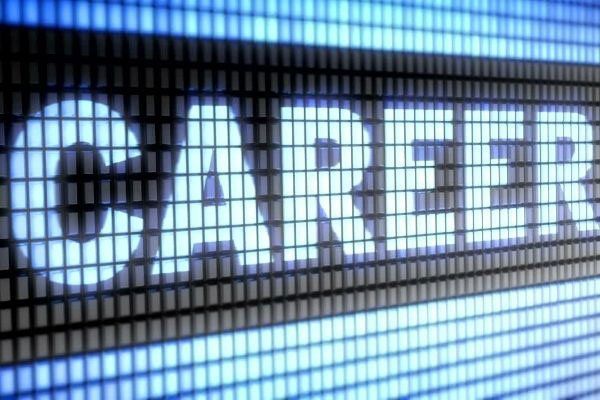 Pursue A Passion: Wanting to pursue a career in the arts discipline really boils down to how much you're willing to put into it. It can't just be a clock-in clock-out situation.
Pursue A Passion: Wanting to pursue a career in the arts discipline really boils down to how much you're willing to put into it. It can't just be a clock-in clock-out situation.
I’m always encouraging people to keep striving or keep looking for that thing that sets their hearts on fire. That gives you a little bit of push to be like, “I’m going to stay up and I’m going to do this,” because it is hard. It is a challenging career to have as a performing artist, especially as a dancer. It is very competitive. A lot of days, you rely on your strength to pick yourself up, keep yourself going, and keep yourself motivated.
I moved out here pretty much by myself from high school. I took that leap of faith and I was prepared to say, “I want to try something different.” That is another huge thing that I would stress to a young person. That is like, “I want to do this. My family maybe doesn’t support me,” but you have to try. Believe in yourself, in the power of your dreams and try. It is easier to try when you are younger than it is when you are older.
I can feel it in my spirit. As I get older, I’m more stubborn to want to do certain things. I’m more apprehensive to try certain things. My partner and I went rock climbing. As a kid, I used to go rock climbing. I thought nothing of it. It was fine. I was fearless. This time, I was mortified. I was like, “I have done this before. Why do I feel like this?” As you get older, you experience more of life and you see more about the world or the world around you, you become a little bit aware. There is a greater sense of awareness. I always try to continue to find and foster that young, spontaneous child in my spirit.
That is what I miss about our youth. We were so fearless and we didn’t know what we didn’t know. The world, once you get older, you have a way of knowing things that make you apprehensive about doing things. Sometimes, it is not even your own beliefs. It is the beliefs of others that have been stowed upon you and now you have inherited them. That is why I love telling these stories because we, as a Black community, have limiting beliefs. There are many limiting beliefs about what we can do and what we can be.
When I go back and talk to these youth about what has been installed in them, I’m like, “No, that is not true. Who told you that? Don’t listen to it.” You can do whatever it is that you want to do but it has to start here first. You have to believe in yourself. Don’t listen to all these people that are projecting these things upon you.
Let’s look at how we can get you to where you need to be. I realized that our stories are not told enough. That is what encouraged me to create this platform where I could tell our stories in the way they should be told so people could start to see more of themselves. Hopefully, at some point, we can reverse psychology this thing. Now that I have seen more of us doing this, I’m like, “What do I want to do now?”
That is mentioned a little bit in The New York Times article but even in the process of creating the first version of WILD or the first adaptation of WILD versus the second iteration, I constantly found myself in my head filtering what I could say based on a white lens. I constantly had to stop myself and say, “No.” I had to give myself permission to say, “No, you can do this and you need to show this because this is what is authentic to our stories and our community. Black and Brown people are not a monolith whatsoever.”
It is important to remember why we are doing what we do or why we are sharing that. For me, I’m doing this because I want Black people to see themselves, see a portion of maybe their experiences or someone else’s experience that they know, and be able to create a greater sense of community around that celebration of honoring who we are and the unique and specific challenges that we go through.
You want to dedicate one hour a day to doing that artistic thing that you love, not even for money, but just learning more about it or practicing whatever it is, just start and get going.
I was having a conversation with somebody about this and I was like, “Black people are so amazing. We are so artistic that we create culture.” Think about that. That is how amazing we are. After we create culture, our culture is mimicked, stolen, and reproduced. Think about that. That is how amazing we are. We are not a monolith but there are so many different things that we can do.
Many stories and artists need to be brought to light to recreate this community of ours to reengage and reunite it. You are doing that with the work you are doing. What is some advice you would give to someone who would like to start a career in your industry? I know you said for you, stand on top of it and make sure that you are being disciplined. Outside of the discipline, what is some advice you would give?
The biggest thing that is resonating in my mind now is to start where you are. It is important to understand that you can start right where you are. A lot of times, people think like, “When I have money or one day, I’m going to do this.” I’m like, “No, start where you are, even if with what you have. If that is your bedroom and say you love to draw, you are starting with your bedroom and the crayons that you have right there and allowing your imagination to develop new ways or new techniques. Start where you are.”
A lot of times, people try to work until it is ideal but I have learned over the years that it is generally never a good time to start something. There will always be challenges, self-doubt, and things that will make you feel like, “Maybe I shouldn’t.” I always encourage people to start, even if it is starting small. After you have finished your 9:00 to 5:00 job and you want to dedicate one hour a day to do that artistic thing that you love, not even for money but learning more about it or practicing whatever it is. Just start and get going.
What is a trick that you do to get out of your head? I know you mentioned the rock climbing story. What is a ritual or technique that helps you refocus that energy or help you get started when you are in your head and you are thinking of all the reasons why you should not do it?
As I alluded to you, it is hard being an artist, especially in New York City because people are coming from all around the globe to do what you do. Many of them look like you with so few opportunities for people that look like us. I have battled for many years with depression and countless discouragement but one thing that my parents led me to at a young age was spirituality and keeping me grounded. For me, it is various affirmations. I love affirmations. Prayer is meditation for me. I was being able to have some private time to pray and to affirm my future, the things that I believe, and the things that I want in my life as well as taking time for you. I love chocolate. All of it is like chocolate people, candy, or whatever.
I’m glad you said that. That is where my mind went as soon as you said that. I love chocolate, too.
I grew up in San Diego, growing up loving See’s Candies. You can’t get See’s out here in New York but now you can. There is a store but when I was first in college out here in New York, you couldn’t find it anywhere. There was a Godiva chocolate store that was right by my university. On Fridays before my last academic class, I would stop in the Godiva chocolate store and I would get a few truffles regardless of how much money I had. Godiva was expensive. Two truffles are going to cost you about $5 but I would save my $5 during the week so that I could go and get my couple of truffles. I would take those truffles and I would either go to Central Park or walk around the city.
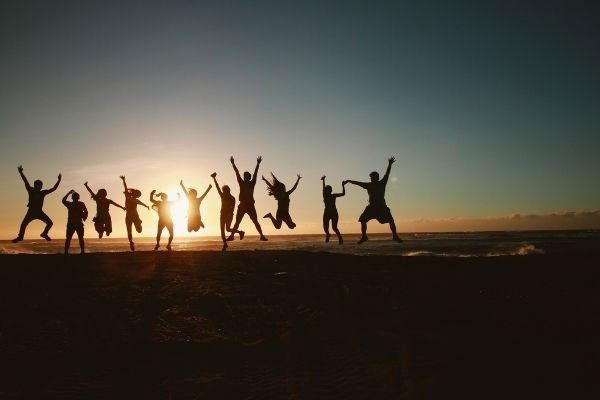 Pursue A Passion: It’s important to create a greater sense of community around just that celebration of honoring who we are and the unique and specific challenges that we go through.
Pursue A Passion: It’s important to create a greater sense of community around just that celebration of honoring who we are and the unique and specific challenges that we go through.
I would turn off my phone and maybe listen to my iPod, listen to music, gives thanks, and refuel myself with motivation. I realize that even though I haven’t achieved the ultimate goals of what I hope to achieve, even being in New York was a blessing and it was a huge step. It was important to honor and recognize all of the small steps that we take towards the bigger goals that we have. Regardless of the discouragement and the challenges that I faced that week, it was one thing that I did for myself every week. It was my own private time to do something that I love and to enjoy being right where I am. I ended up calling it Godiva Friday. It has become a weekly ritual for me.
It doesn’t always happen on Friday. Sometimes, it will happen on a Monday or Tuesday. Sometimes, it will happen twice a week, depending on how I’m feeling that week. If I need that extra encouragement, it will come. It doesn’t always come in the form of chocolate. Sometimes, it will be going to see a show or popping a bottle of Prosecco. It is whatever refuels my spirit positively that helps me celebrate who I am and where I am now. I feel like we don’t do that enough as Black people.
We don’t. Self-care is something that I think we, as a Black community, need to do a lot better on. We need to work through it. I was talking to somebody because I wasn’t feeling too well but I was still trying to push through because I had things to do at work and I made these deadlines more important than my health.
The more I tried to push through, the sicker I got until I needed to lay it down. She was like, “Why do you do that to yourself?” I was like, “I don’t know.” She was like, “No, think about it. Why do you do it to you?” We started having this conversation and I started thinking. I was like, “I hate to get super deep with it, but if I had to go deep, as you are telling me to go, it has something to do with 400 years that maybe I feel like I can’t take a break.”
Generational trauma is real. Trying to find ways to dismantle those traumatic symptoms or traumatic structures within our own minds, psyches, and bodies is a process. I know as a child, my dad used to tell me like, “You have to work even harder than the normal person because of the color of your skin. We can’t be on time. We have to be early. We have to come correct. We have to be 110% on top of our game because people are going to judge us purely from what we look like.”
A lot of that is passed down from all of those years of trauma and that being ingrained and beaten into them. Being an adult and trying to define for me what excellence is, giving myself grace, understanding that we do make mistakes and that is okay, not sitting with that guilt and understanding that taking the time or taking a break is not giving up. It does not mean that we are a failure. All of those things are things that I have had to continue to reaffirm myself because that is not what we are taught.
We are always taught to keep going, keep working harder and prove ourselves but we are supposed to show that we are okay throughout the whole process. It has been transformative for me to be able to embrace the beauty of imperfection. My work as an artist and me embracing that idea, I feel like it is so much more authentic and meaningful because I can show people and people can connect with that idea of working through challenges and not having to be Instagram-perfect.
Taking a break is not giving up.
I’m in the season of trying to unlearn what has been passed down and taught to me and redefine what it is for myself. I’m trying to do more of what you do, like that self-care portion. I’m still a work in progress. One of the things that I often teach in leadership development that I got to know and love is, for example, we go on an airplane. The stewardess comes on and, in the unlikely event of an emergency, flight attendants tell us that at the start of every flight. “When the mask appears in front of you, place yours firmly over your nose and mouth and breathe normally. If you are traveling with a child and someone who requires assistance, secure your mask first, then assist the other person.”
At first glance, saving yourself might seem like an act of selfishness but the truth is though, if we pass out from lack of oxygen, we are unable to help those around us. This principle also applies to life in general. People have to remember, especially our people, self-care is not a matter of selfishness or ego. Taking care of your own needs on a consistent basis leads to better mental health, greater productivity, richer relationships with family, friends, and your professional colleagues.
You got to take care of yourself first in order to be able to take care of those around you. We need to do a better job at doing that so we can understand that. What happens is if we keep going and we are hurt, people hurt people. Whether you intentionally mean to do it or not, it will happen. To know what self-care is or what love is, you need to embrace that fully and start to work in that lens. What is one good lesson life has taught you? I gave you one of mine.
I could say so many. Believing in yourself is crucial. It is key to everything. This ties in with what you asked me about what keeps me going when things get hard or challenging. Aside from taking time for myself, it is also understanding that I bet on myself every day and that if I don’t do it, it is not going to get done or at least it is not going to get done here. Someone else is going to do it. Why not get up and try again another day? You got to bet, believe in yourself, and be willing to try and try again.
As the late great Aaliyah was saying, “If at first, you don’t succeed, you can dust it off and try again.” What do you think the future has in store for your industry?
Now, we are in a period of reform in so many ways because the civil unrest has brought a heightened sense of awareness of the inequities and inequalities that exist historically within the performing arts, specifically affecting Black and Brown people. While so many theaters are closed around the country, these organizations have time to sit and deal with these systemic challenges. They are now being held accountable as to how are you going to change that moving forward?
Performative solidarity is great. Thank you so much for your dream team shout-outs. However, now we need to start to see these structures being dismantled and rebuilt. In terms of where we go moving forward, now Broadway, as I said, is closed but when it comes back, I look forward to doing it and being even more diverse and equitable than it ever was before.
In dance, in the ballet world, we are having the same conversations. I look forward to more growth and innovation, especially in technology and how we are able to reach and compel audiences or engage with audiences in a different way. Perhaps before the pandemic, a lot of institutions were not thinking that way but the internet is such an incredible tool.
We only have to use it wisely, smartly, and creatively. It is so beautiful how technology can connect us. Even you and me from 3,000 miles away are able to have this conversation and share it with the rest of San Diego, which is beautiful. A lot of our industry in the performing arts is going to start to move, grow and progress with this idea of technology being an even greater connecting force between people.
I agree with that. This show was birthed not so long ago when we had all the civil unrest. People always tell me like, “You should start a podcast.” COVID happened and I’m like, “How am I going to do that now?” I found this platform which was what I was able to do it. The interesting thing about it is that I started with only San Diego in mind but the world has something different for me because I started looking at podcasts as the numbers. I started getting people from the UK, Nigeria, France, Spain, and Japan. I was like, “We got Black people out in Japan?”
Yes, we do. That is beautiful. Your spirit guides are leading you to think bigger, and it is beautiful. You planted the seed, you started where you were, and you put it off. You stopped putting of starting it and looked at what it is doing. I always loved those moments when we have that like, “This thing that I thought I couldn’t do, I’m able to do and reach even more people than I initially imagined.”
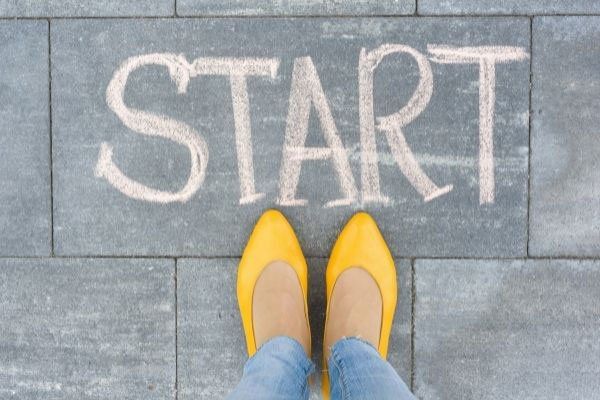 Pursue A Passion: It's important to understand that you can start right where you are and allow your mind to imagine and develop new ways or new techniques.
Pursue A Passion: It's important to understand that you can start right where you are and allow your mind to imagine and develop new ways or new techniques.
It blows your mind because I know when this article comes out, you are going to reach a whole ton of people across the globe. I know that. I see it and I feel it. You put that energy out there. It is one of those surreal moments. You know it is happening but it is happening. You are like, “Is this happening? This is happening.”
That is why when I woke up, I rushed out to get the newspaper because I think seeing it online didn’t hit me. It was more like, “This is happening,” but seeing it on paper, having something tactile that I can hold on to, is an entirely different experience of realization like, “This is real.” I told you I ran out to buy the paper. I had to go to three stores to find it. I haven’t even looked at it yet but as I’m sitting here, I’m watching my email blow up. I’m like, “What is going on?” It is real but at the end of the day, it is these little glimmers of hope that propel me with inspiration to keep going.
I’m so thankful when I started to get down on myself because I have been so frustrated. It is a lot to put together a film during a pandemic. The responsibility that comes with wanting to tell our stories accurately with sensitivity keeps me up at night. This past month I could say I have hardly slept and I have cried a lot. I have been questioning like, “Can I do this? Should I do this? Am I doing the right thing?” It is these little glimmers of like, “We are going to feature you here and talk about this.” It propels me with so much more motivation to keep going. It makes me grateful, thankful, humble, and it reminds me to keep going and pushing.
I resonate with that, too, because when I’m putting together the show and I hear people’s stories. I may resonate with a lot of things in certain people’s stories and I’m also thinking about the audience because there are different audiences out there. There are some Black people that may disagree with certain things that may be put out. There are some of them that may not be as versed in their surroundings or the lessons they received in life to be as knowledgeable about certain things so they may reject certain premises. It is what keeps me up at night. I was like, “I hope they can see past this and get the message,” because there are some real good depths in there. If they can get past this, there is something there for everybody.
That is something too, those challenges and moments when you are in the mud. I can’t tell you how many times I cried out of pure frustration with everything I’m trying to do. This is so hard. There is so much discouragement, especially when it comes to creating work to amplify our voices and empower Black people. I’m starting to learn more that it is in those dark moments and once you get so dark, you have to go into the light.
Figure out the patience, the tenacity, and the strength to continue pushing through those dark moments believing that it is not going to be like this always. That is so hard to do because I faced this a number of times throughout my X amount of years’ career. It is mind-blowing what can happen when we make the decision to keep going a little bit more.
It is not only that. Your trauma is real and it is like you have a scab. The scab is not fully healed and somebody peels that suck off. You have to make a conscious effort to like, “Lord, let me go through this and I will stay in but go through it.” I feel that is where we are at in the world now. What you see happening in the world of arts when we look at all these injustices, the systemic racism, and the things that are going on in the arts is a microcosm of what is going on in the world. What happened since George Floyd, and it is happening everywhere.
We are forced to pause, look at ourselves, peel these layers of scab back so we can fully tend to the wounds that caused here in America and around the world the injustices. There are some people coming out of this that did some time to reflect and some people who have not taken the time to reflect. Something new is about to get created and it is exciting to see.
It is our time to be able to see the TV shows that are happening. The ways in which we are able to share our voices, our experiences, and our challenges. The things that I talk about now in terms of lack of representation, equity, and injustices that I faced or other people in my industry have faced, people were not as receptive to hearing us. It took us having to lose another Black life and another Black life for people to finally start to get it but I’m glad that we are on a path towards healing, honoring, and loving Blackness.
I love it and that is what my work has been called to do. It looks like you are on that path. Jeremy McQueen, I think you and I could sit and talk for hours but I try to keep this drive town, if we ever get back to driving, the length of a show. Let’s close it out like this. What projects are you working on? Tell us all about WILD, any other stuff you are working on, and where can people find you?
You can find me on my website, BlackIrisProject.org. We are also on Instagram, Facebook, and Twitter. Our Instagram is @BlackIrisProject but I’m working on WILD now. That is a year-long project. This is the second iteration or the second portion of a four-part film that will be coming out soon. The third portion comes out in May 2022 and is going to be a live performance in the Bronx here in New York. We have got some dreams of Netflix and some other things for this.
Put it out there. If somebody from Netflix is reading, give my guy a call.
WILD is the forefront of my focus of what I’m working on artistically now. I love to stay engaged with people, especially the San Diego community that I hold so dear in my heart. Please feel free to follow us. If you are able to support us, we run purely off of the generosity of our community and our supporters. All donations are tax-deductible and they can be made on our website at BlackIrisProject.org.
Jeremy McQueen, it has been an absolute pleasure to have this conversation with you. I thoroughly enjoyed myself. Hopefully, you enjoyed your time here too. When act three or four comes out, let’s do this again.
It sounds great. Thank you so much.
That has been another episode of the show, ladies and gentlemen. Make sure you tune in and click on those links to stay in touch with Jeremy.
Important Links:
- Jeremy McQueen
- Christina Jogoleff
- Nashville Ballet
- Where the Wild Things Are
- Equal Justice Initiative
- Richard Ross
- San Diego Junior Theatre
- WILD
- Facebook - The Black Iris Project
- Twitter - The Black Iris Project
- @BlackIrisProject – Instagram
About Jeremy McQueen
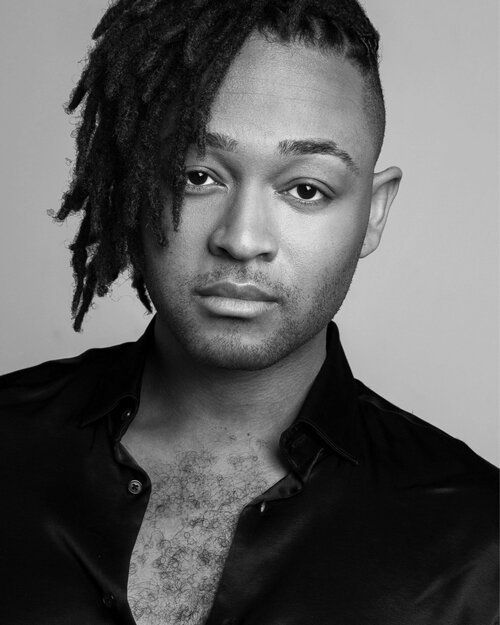
Jeremy Mcqueen is an award-winning choreographer, dedicated to story-telling rooted in experience and social engagement. His work aims to create spaces of comfort, solace, and connection through reflection—a sharing of observations of what is going on around him.
Born and raised in San Diego, California, McQueen is a graduate of The Ailey School/Fordham University, B.F.A. in dance program. At the age of eight McQueen saw a production of The Phantom of the Opera and was immediately drawn to the arts. That same year he began studying music and theater. At the age of 11 he started his training in dance at the San Diego School of Creative and Performing Arts. McQueen has also trained as a scholarship recipient in the schools of American Ballet Theatre, San Francisco Ballet, and Alonzo King’s LINES Ballet.
McQueen is a 2019 recipient of the Bronx Council on the Arts’ BRIO (Bronx Recognizes It’s Own) Award for Excellence in Choreography, a 2013 recipient of the Joffrey Ballet of Chicago’s Choreographers of Color Award [Winning Works], and a two-time finalist of the Capezio Award for Choreographic Excellence. The film adaptation of McQueen’s ballet A Mother’s Rite recently received a 2020 Emmy® Award nomination from The New York Chapter of the National Academy of Television Arts and Sciences. A Mother’s Rite has been nominated for Outstanding Arts: Program/Special, for excellence in a program or special that focuses on the arts – fine arts, literature, philosophy, and the performing arts.
McQueen’s choreographic works have appeared at the John F. Kennedy Center for the Performing Arts, Carnegie Hall, SummerStage in Central Park, Jacob’s Pillow Dance’s Inside/Out series, Dancers Responding to AIDS’ Fire Island Dance Festival, and has been commissioned to create works for organizations including American Ballet Theatre’s Jacquline Kennedy Onassis School, the Kentucky Center for the Performing Arts, and The Ailey School, amongst others. In 2014, McQueen choreographed Skylight Music Theatre’s critically acclaimed production of the Grammy Award-winning musical HAIR, and in 2019 he choreographed the world premiere of Harrison David Rivers’ Relentless Award-winning play The Bandaged Place
As a performer, McQueen made his professional debut at the age of 15 performing in regional theater productions in his hometown, and has also appeared in the Broadway national tours of Wicked and The Color Purple in addition to the Radio City Christmas Spectacular at Radio City Music Hall. McQueen has also danced as a guest artist with the California Ballet Company and Dominic Walsh Dance Theatre, in addition to The Metropolitan Opera’s productions of Die Fledermaus, Aida, Les Contes d’Hoffmann, and Don Giovanni.
McQueen cites two influential instructors as a source for his work and creative energy, Donald Robinson and Kazuko Hirabayashi. From Mr. Robinson, McQueen learned his guiding principle of discipline, doing what you know you’re supposed to do even when no one is there to make sure you do it. At a time when McQueen was in a struggle trying to make his way as a dancer, Ms. Hirabayashi told him to choreograph about it. It is in the craft of story- telling and making a way for yourself through discipline and focus that McQueen was led to start The Black Iris Project, a creation of space for other like-minded artists to reflect their experiences.




